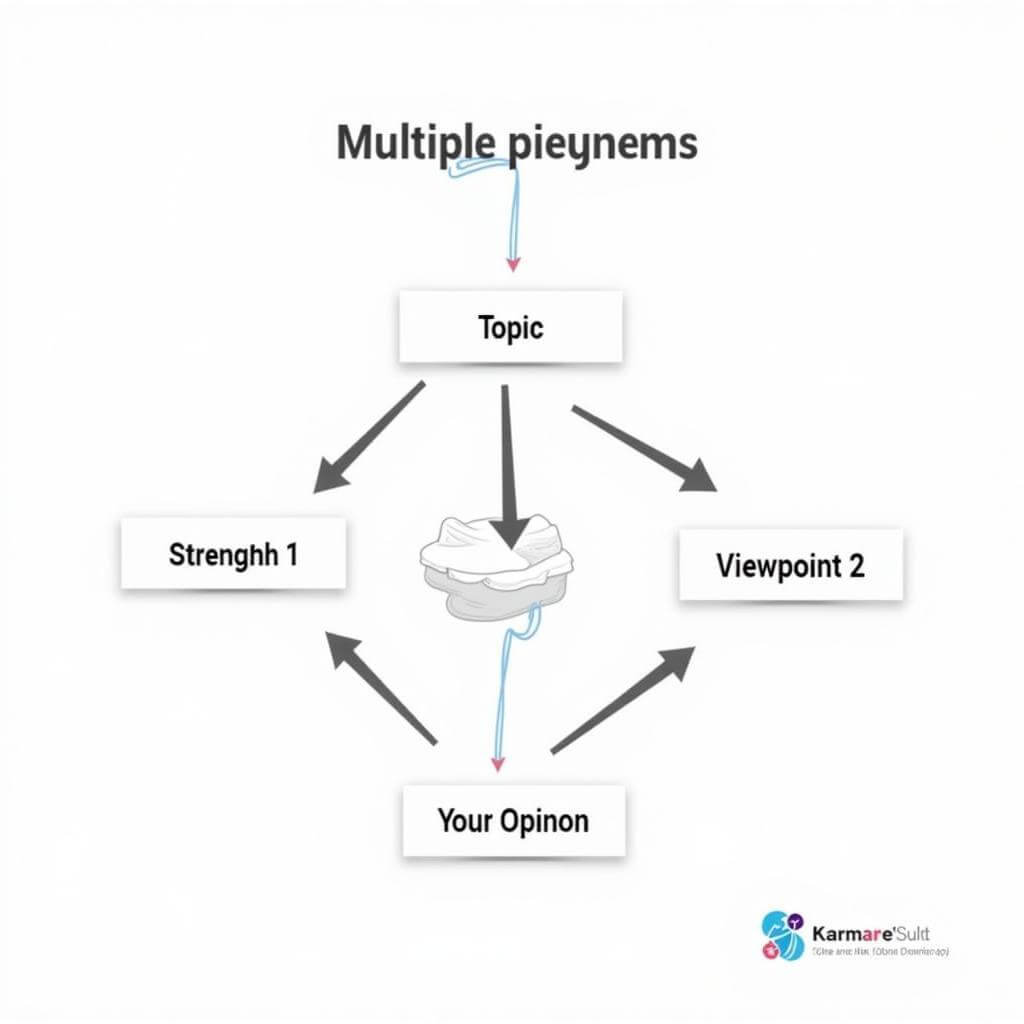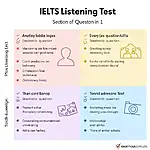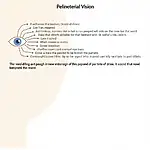In the IELTS exam, the ability to handle multiple viewpoints confidently is a crucial skill that can significantly boost your score. This comprehensive guide will equip you with effective strategies to navigate diverse perspectives in both the Speaking and Writing sections of the test.
Understanding the Importance of Multiple Viewpoints in IELTS
Handling multiple viewpoints is essential in IELTS for several reasons:
- It demonstrates critical thinking skills
- It showcases your ability to analyze complex issues
- It reflects real-world scenarios where diverse opinions are common
- It allows you to present a balanced argument
By mastering this skill, you’ll be better prepared to tackle handling complex opinions with ease and improve your overall performance.
Strategies for Handling Multiple Viewpoints in IELTS Speaking
1. Active Listening and Paraphrasing
When faced with multiple viewpoints in the Speaking test, especially in Part 3, active listening is key. Practice paraphrasing the examiner’s questions to ensure you’ve understood all perspectives presented.
“Active listening is not just hearing words; it’s understanding the nuances and implications behind them,” says Dr. Emma Thompson, IELTS Speaking expert.
2. Acknowledging Different Perspectives
Before presenting your own opinion, acknowledge the existence of multiple viewpoints. This demonstrates your awareness of the complexity of the topic.
Example:
“While some people believe that… others argue that… In my opinion…”
3. Using Balanced Language
Employ language that shows you can see merit in different viewpoints:
- “On the one hand… On the other hand…”
- “There are pros and cons to both arguments…”
- “While I can see the validity of both perspectives…”
4. Providing Examples
Support your discussion of multiple viewpoints with relevant examples. This adds depth to your response and showcases your ability to apply abstract concepts to real-life situations.
5. Transitioning Smoothly Between Viewpoints
Use transition phrases to move seamlessly between different perspectives:
- “In contrast…”
- “Alternatively…”
- “Another way to look at this is…”
Mastering these transitions is crucial when handling tricky topics in part 3 of the Speaking test.
Techniques for Addressing Multiple Viewpoints in IELTS Writing
1. Planning Your Essay Structure
Before writing, outline the different viewpoints you’ll discuss. This ensures a well-organized and balanced essay.
- Introduction: Present the topic and acknowledge the existence of multiple viewpoints
- Body Paragraph 1: Discuss the first viewpoint
- Body Paragraph 2: Explore an alternative perspective
- Body Paragraph 3: Present your own opinion or a synthesis of views
- Conclusion: Summarize the main points and restate your position
2. Using Appropriate Linking Words
Employ a variety of linking words to connect different viewpoints:
- To add information: “Furthermore,” “Moreover,” “In addition”
- To contrast: “However,” “Nevertheless,” “On the contrary”
- To show cause and effect: “Consequently,” “As a result,” “Therefore”
3. Maintaining Objectivity
While it’s important to express your own opinion, maintain an objective tone when discussing multiple viewpoints. Avoid using emotionally charged language or dismissing opposing views outright.
4. Analyzing Strengths and Weaknesses
For each viewpoint presented, discuss both its strengths and weaknesses. This demonstrates your ability to critically analyze complex arguments, a key skill in handling reading with complex arguments.
 IELTS Writing: Analyzing Multiple Viewpoints
IELTS Writing: Analyzing Multiple Viewpoints
5. Synthesizing Ideas
In your conclusion, try to synthesize the different viewpoints you’ve discussed. This shows your ability to process complex information and form a nuanced opinion.
“The key to handling multiple viewpoints in IELTS Writing is not just to present them, but to engage with them critically,” advises Professor James Mitchell, IELTS Writing specialist.
Common Pitfalls to Avoid
- Ignoring opposing viewpoints
- Presenting a one-sided argument
- Using overly simplistic language to describe complex issues
- Failing to support viewpoints with examples or evidence
- Neglecting to express your own opinion
By avoiding these pitfalls, you’ll be better equipped to handle questions about multiple opinions effectively.
Practicing Your Skills
To improve your ability to handle multiple viewpoints confidently:
- Read widely on current affairs and controversial topics
- Practice debating with friends or join a debate club
- Write practice essays addressing complex issues
- Watch political discussions or debates to observe how experts handle diverse opinions
- Seek feedback from IELTS tutors or experienced test-takers
Conclusion
Mastering the art of handling multiple viewpoints confidently is a valuable skill that will serve you well in the IELTS exam and beyond. By acknowledging diverse perspectives, analyzing them critically, and presenting your own informed opinion, you’ll demonstrate the sophisticated communication skills that examiners are looking for. Remember, the goal is not just to showcase your language abilities, but to prove your capacity for nuanced, mature thinking on complex topics.
As you prepare for your IELTS test, continue to practice these techniques and stay informed about global issues. With dedication and the right approach, you’ll be well-equipped to tackle any question that comes your way, confidently navigating the diverse viewpoints you encounter.
 IELTS Confidence: Handling Multiple Viewpoints
IELTS Confidence: Handling Multiple Viewpoints
FAQs
-
How many viewpoints should I discuss in my IELTS Writing Task 2 essay?
It’s generally best to discuss at least two contrasting viewpoints, plus your own opinion. This demonstrates a balanced approach to the topic. -
Is it necessary to agree with all viewpoints in the Speaking test?
No, it’s not necessary to agree with all viewpoints. What’s important is showing that you can understand and discuss different perspectives respectfully. -
How can I improve my ability to handle speculative questions with confidence?
Practice considering multiple future scenarios for various topics. This will help you develop the flexibility needed to handle speculative questions confidently. -
What if I can’t think of multiple viewpoints on a topic in the Speaking test?
If you’re struggling, try to think about how different age groups, cultures, or professions might view the topic differently. -
Should I use personal examples when discussing multiple viewpoints?
Yes, personal examples can be very effective, especially in the Speaking test. They add authenticity to your responses and demonstrate real-world application of ideas. -
How can I avoid sounding repetitive when discussing different viewpoints?
Use a variety of transition phrases and vary your sentence structures. Also, focus on different aspects of each viewpoint to keep your discussion fresh and engaging.


